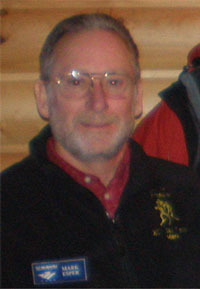
Vasa Trail committee submits Fat Bike plan to DNR
Tue, Oct 28, 2014 - By Mark Esper
My name is Mark Esper and I'm the president of the North American Vasa. I'm also a member of the coalition of leaders of the ski and fat bike communities that is working with the DNR to develop long term solutions to the conflict that has developed on the Vasa Trail over the past two winters.
 Meetings of the trails group have been characterized by respect and a focus on solutions. There is a realization that developing a new winter bike trail and improving the existing Vasa Trail is in our mutual interest. This will not be accomplished with a one-and-done opening of 15 km of winter sports single-track trail . Subsequent phases must occur if our trails are to truly accommodate varied users become world class.
Meetings of the trails group have been characterized by respect and a focus on solutions. There is a realization that developing a new winter bike trail and improving the existing Vasa Trail is in our mutual interest. This will not be accomplished with a one-and-done opening of 15 km of winter sports single-track trail . Subsequent phases must occur if our trails are to truly accommodate varied users become world class.
We should soon learn the status of the proposal that we submitted to the Michigan Department of Natural Resources establish a winter biking trail and are optimistic that it will be approved. At that point you can expect that details will be fully communicated.
I am optimistic that the situation on our trails will be better this year than it would be had we not initiated this process. It is important to understand this is only the first step. There is a great deal of passion regarding use of the Vasa. Passion brings energy. My hope is that our energy is focused towards constructive ends.
October 23, 2014
Winter Trail Task Force Committee Progress Report
Background
Controversy over the use of "fat bikes" on the Vasa Pathway has arisen due to rapid popularity of fat bikes and their use of the groomed Vasa trail during the winter. In practice, the Vasa trail has been a groomed and community supported, ski specific trail in the winter since its construction in 1991. However, the DNR maintains that the Vasa is, and has always been a non-motorized, multi-use trail.
The DNR announced on April 28, 2014 that they would not ban fat bikes from the trail given the absence of hard data indicating that the uses were incompatible. A coalition of ski and bike representatives sought the DNR's permission to work with them to propose solutions to reduce conflict and improve trail experiences for both user groups, principally through the establishment of a trail system designed to be attractive to fat bikers. The DNR accepted that offer and empowered the coalition to proceed accordingly. The coalition has been working in good faith since that time to propose solutions and implement a new trail for the upcoming winter season.
Implementation
A proposal to create a groomed fat bike trail system was submitted to the DNR on September 16, 2014. The DNR has "conceptually approved" this work and is fast-tracking the process. It is our hope that actual approval will be granted very soon. The initial phase will primarily use existing single track. The intent is to reduce fat bike use of the Vasa trail through the development of a viable, attractive alternative. The new eight mile trail will include points of intersection and overlap with the Vasa Trail and will be ready for the winter season of 2014-15.
Subsequent phases could potentially include:
- Connectivity to the groomed single track trail from the Supply Road, Mt. Holiday, and Bartlett Road Facilities.
- Improving the Vasa Pathway including reduction of choke points, blind turns, and creating passing zones
- Developing classic-only ski trails
A communication strategy will be created to:
- Encourage fat bike use of new eight mile trail
- Educate all users of trail etiquette
- Highlight economic benefits of a comprehensive trail system
